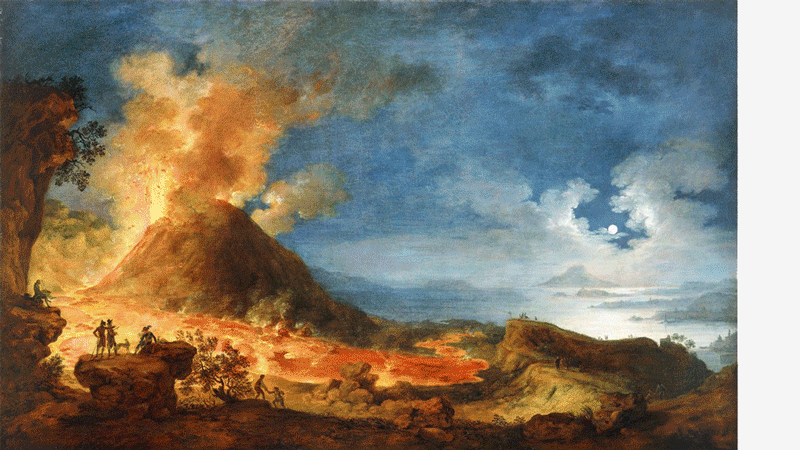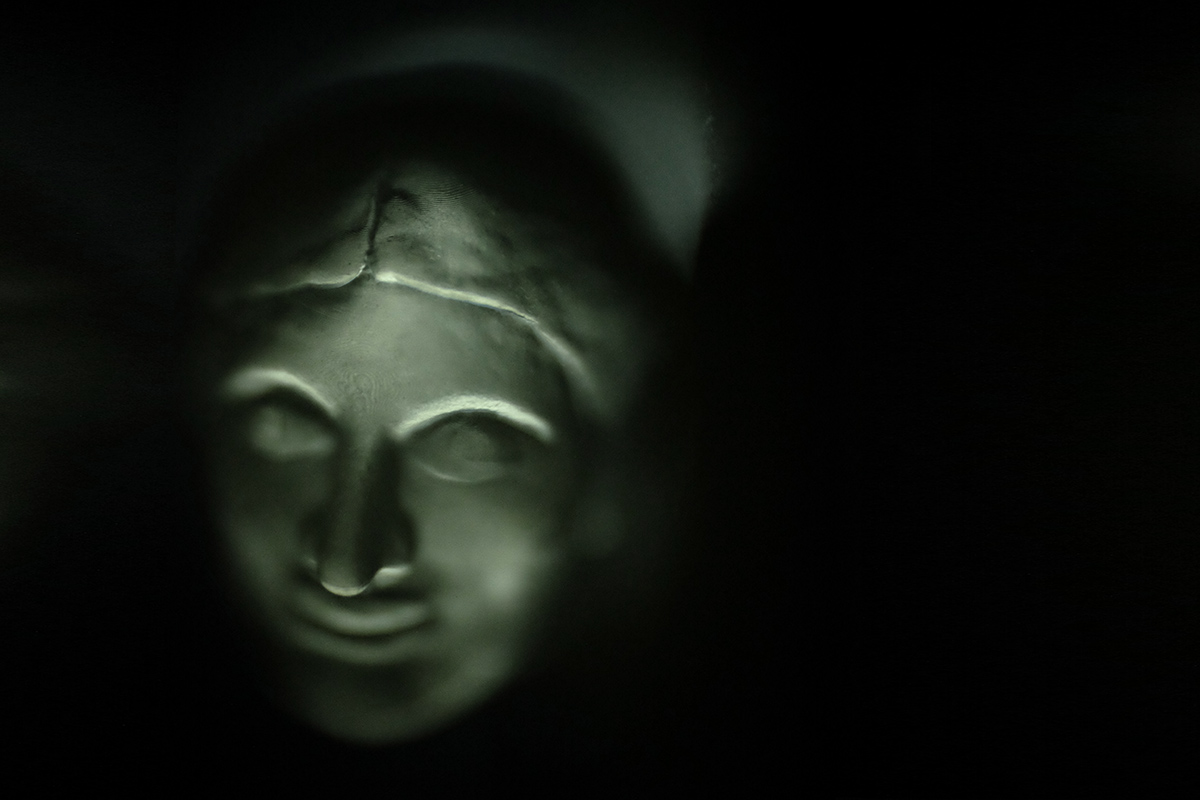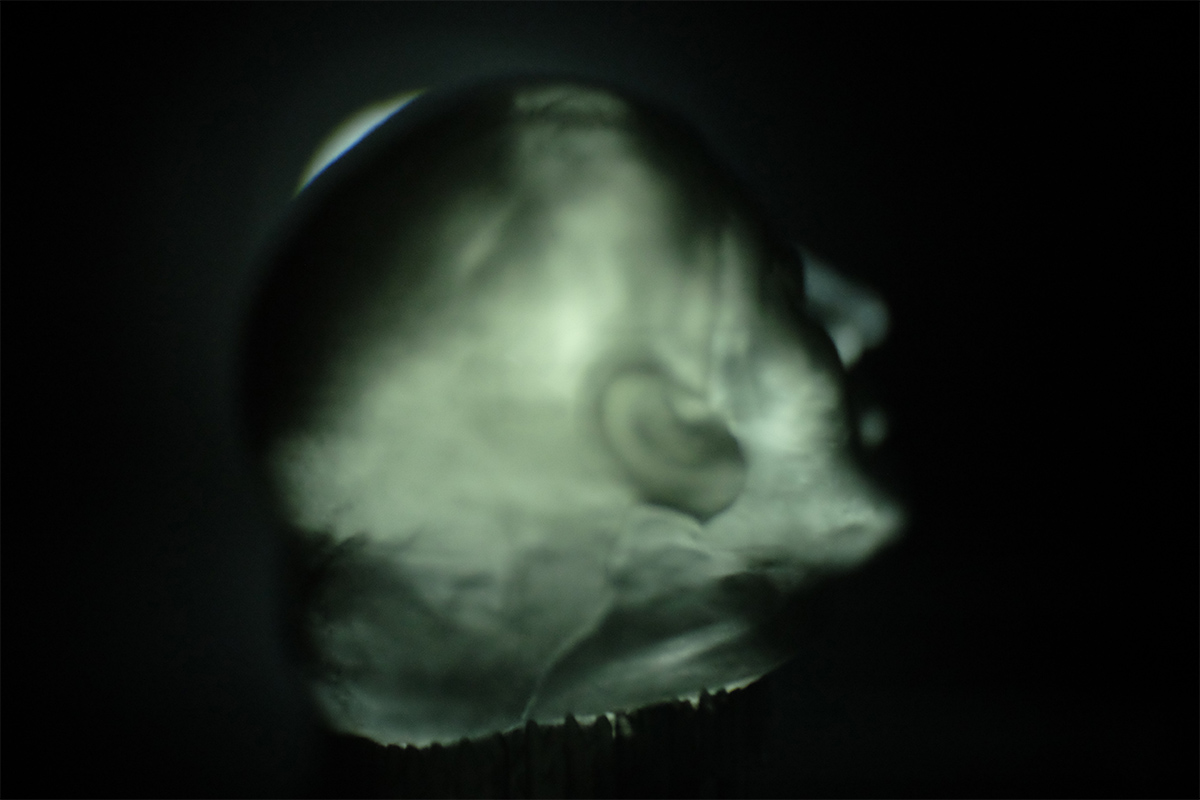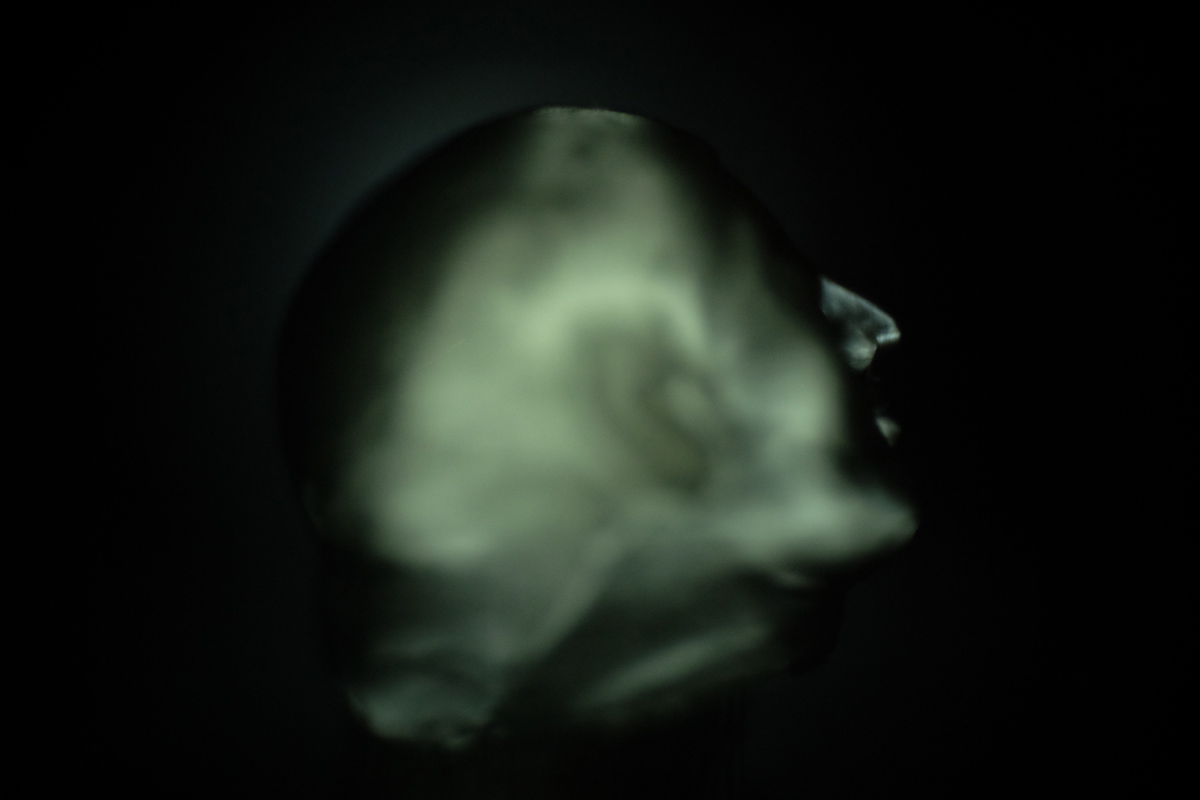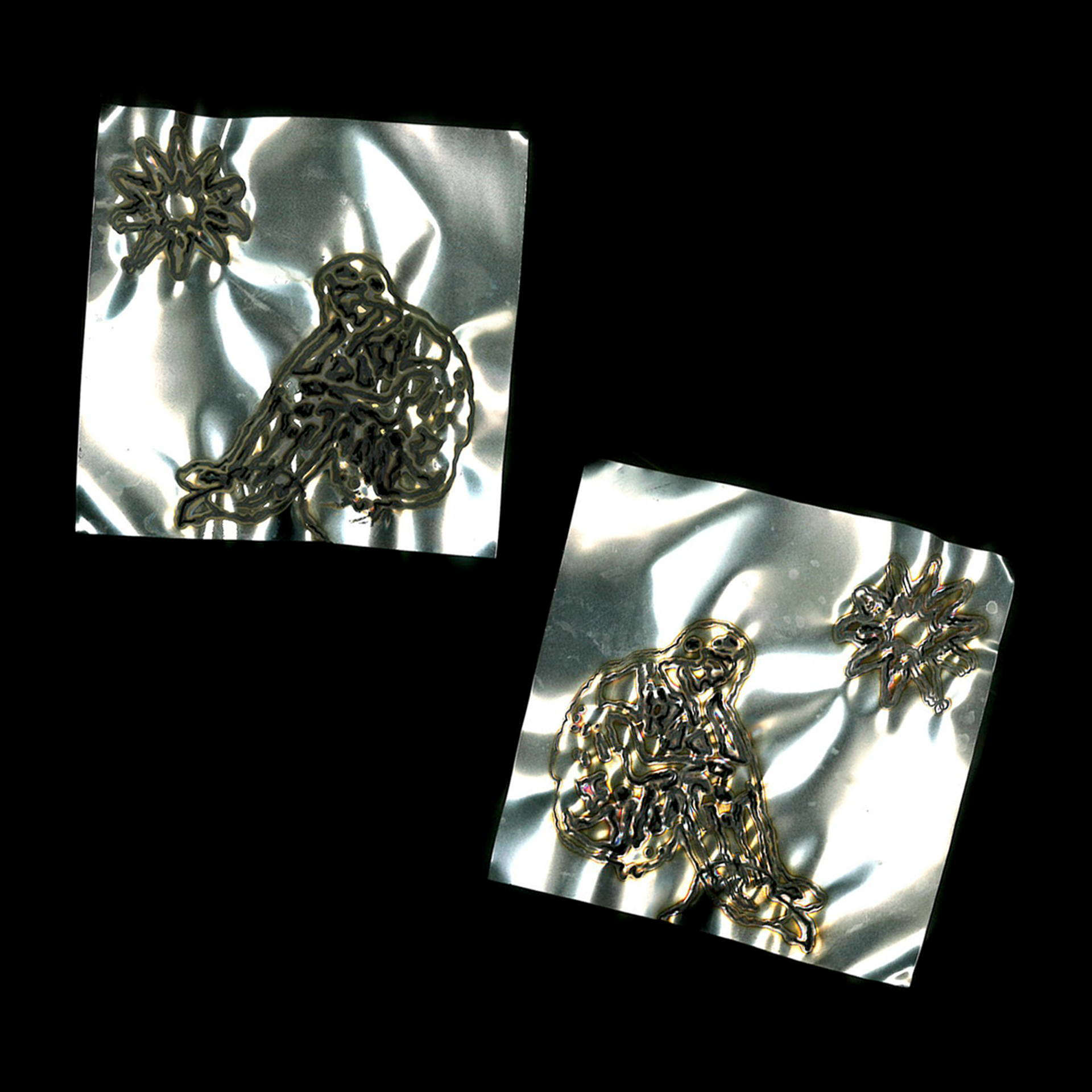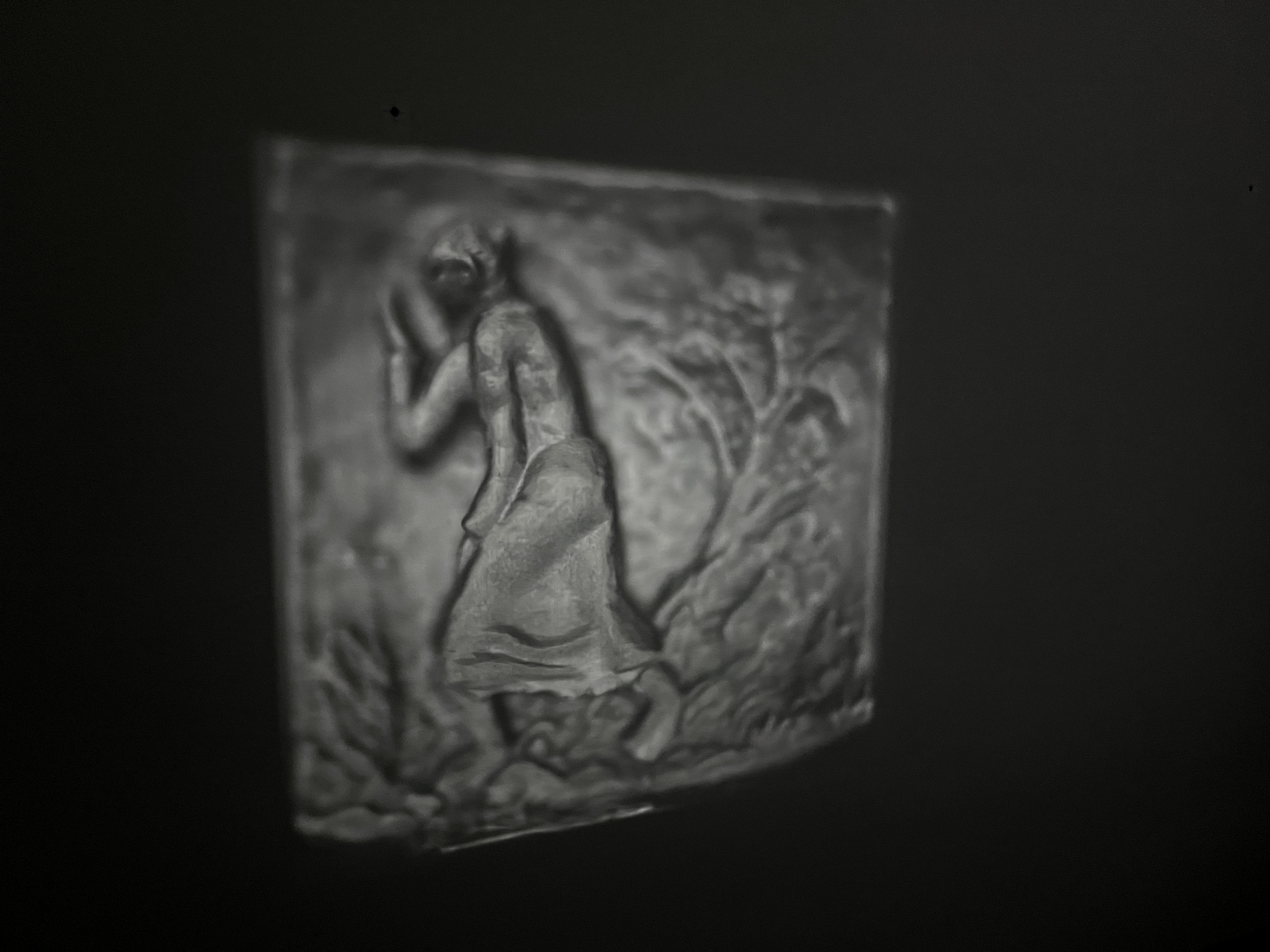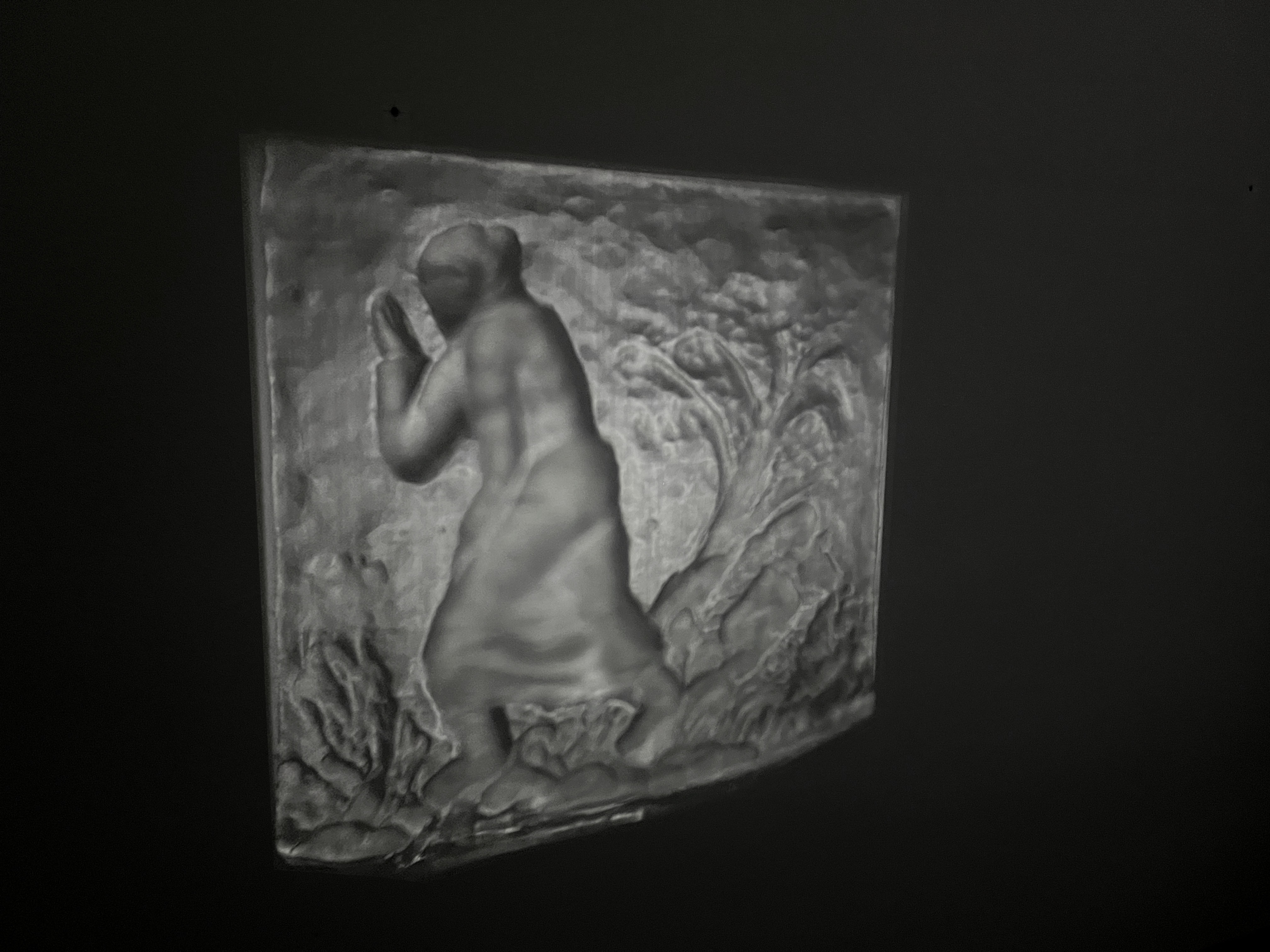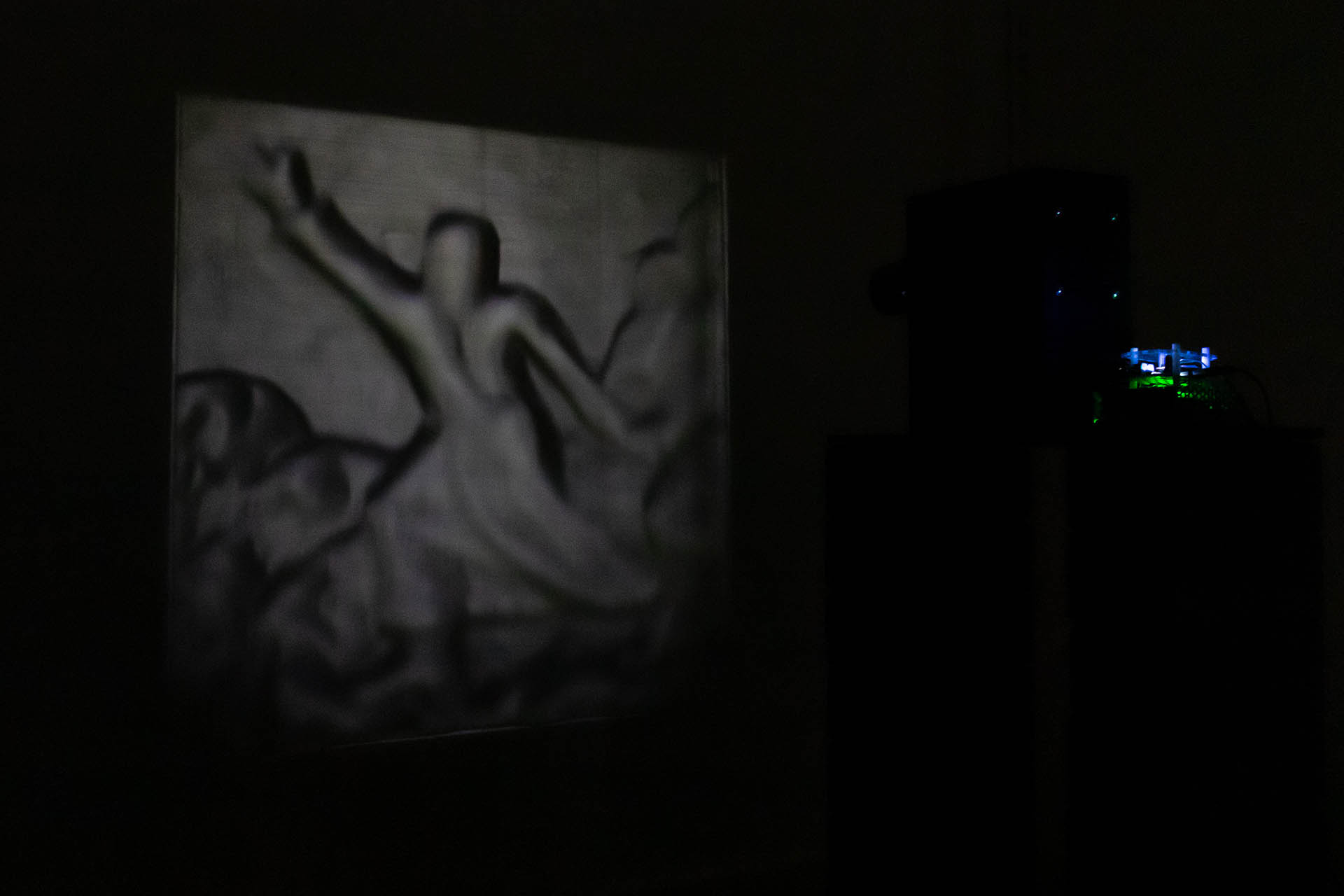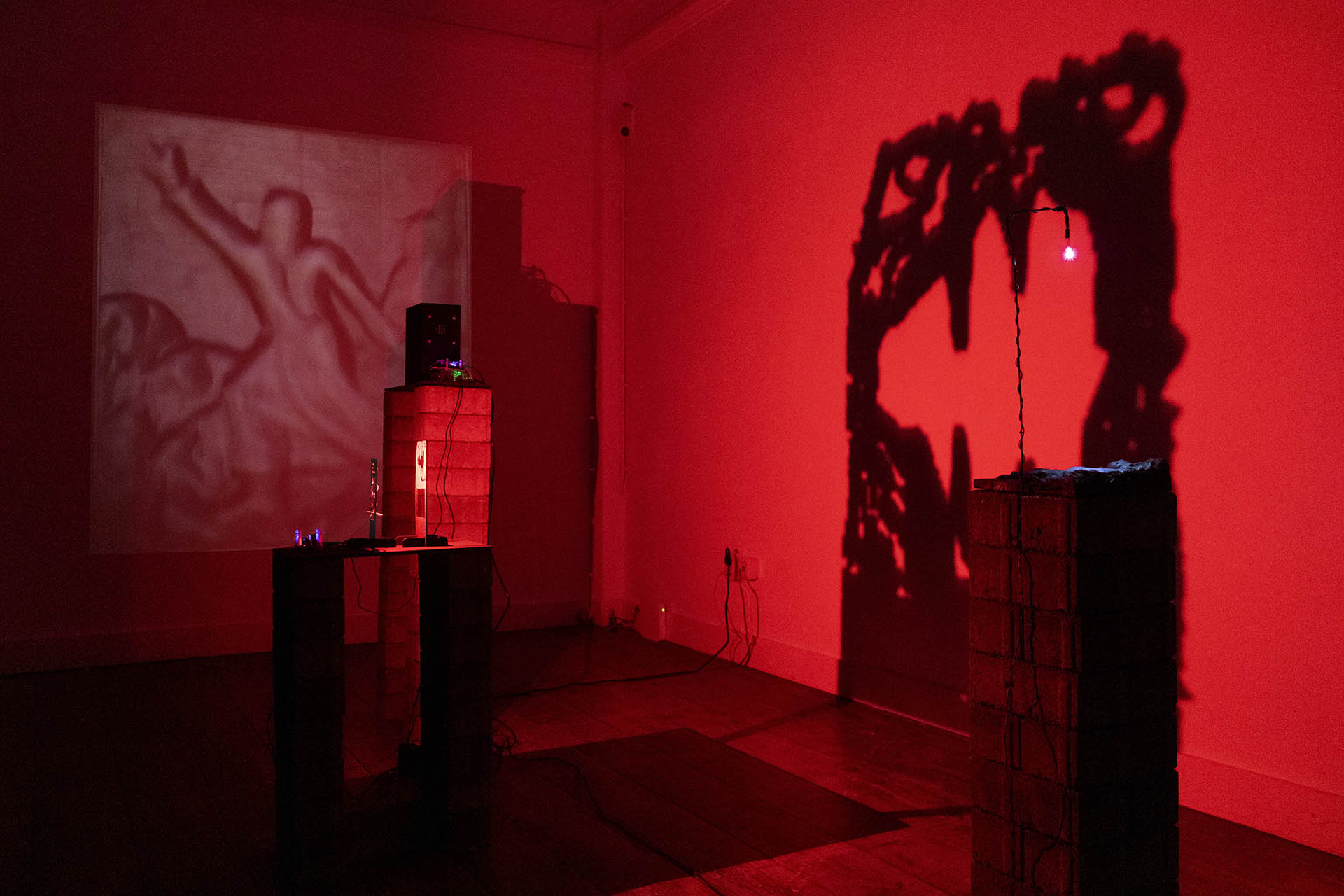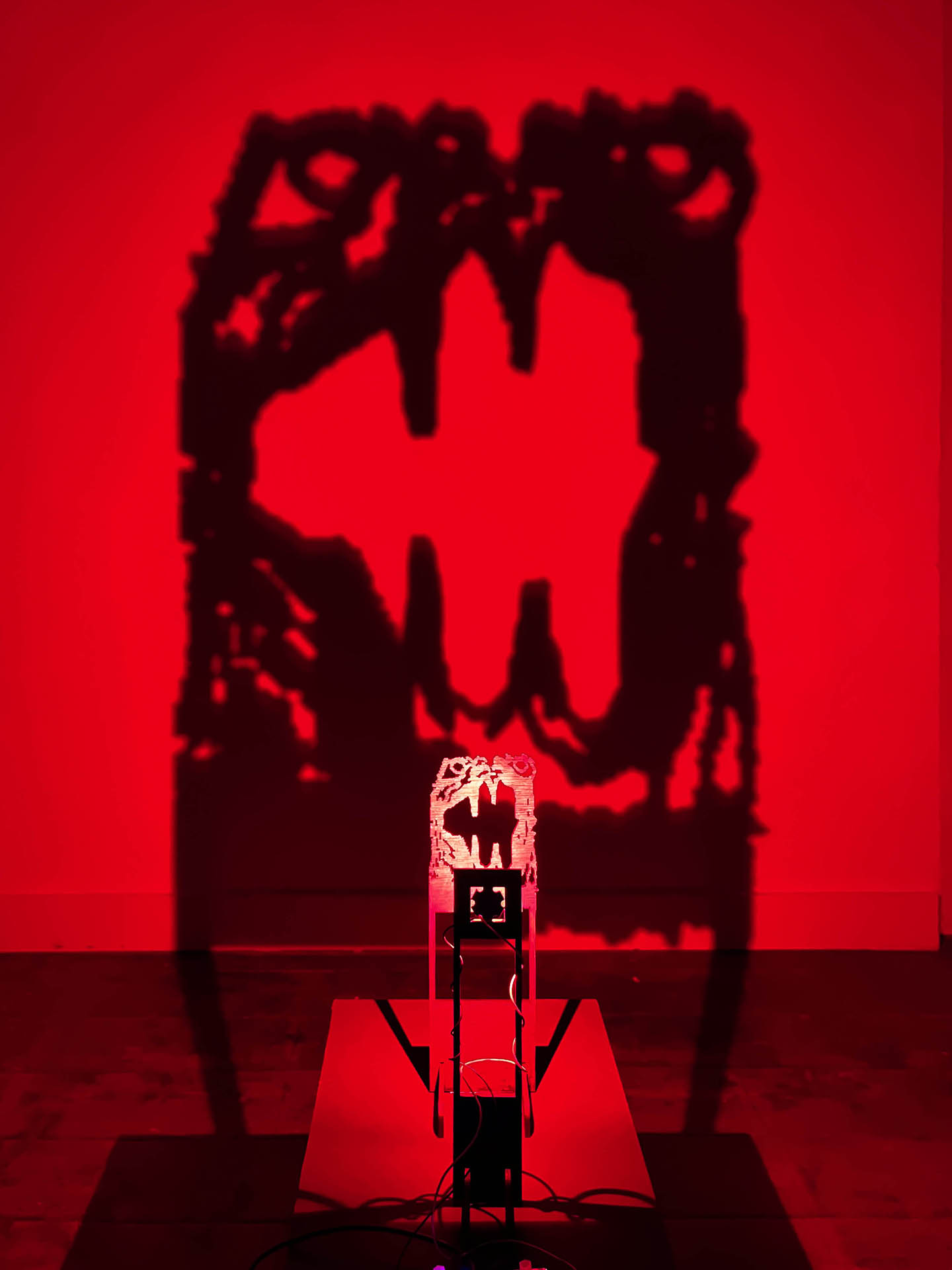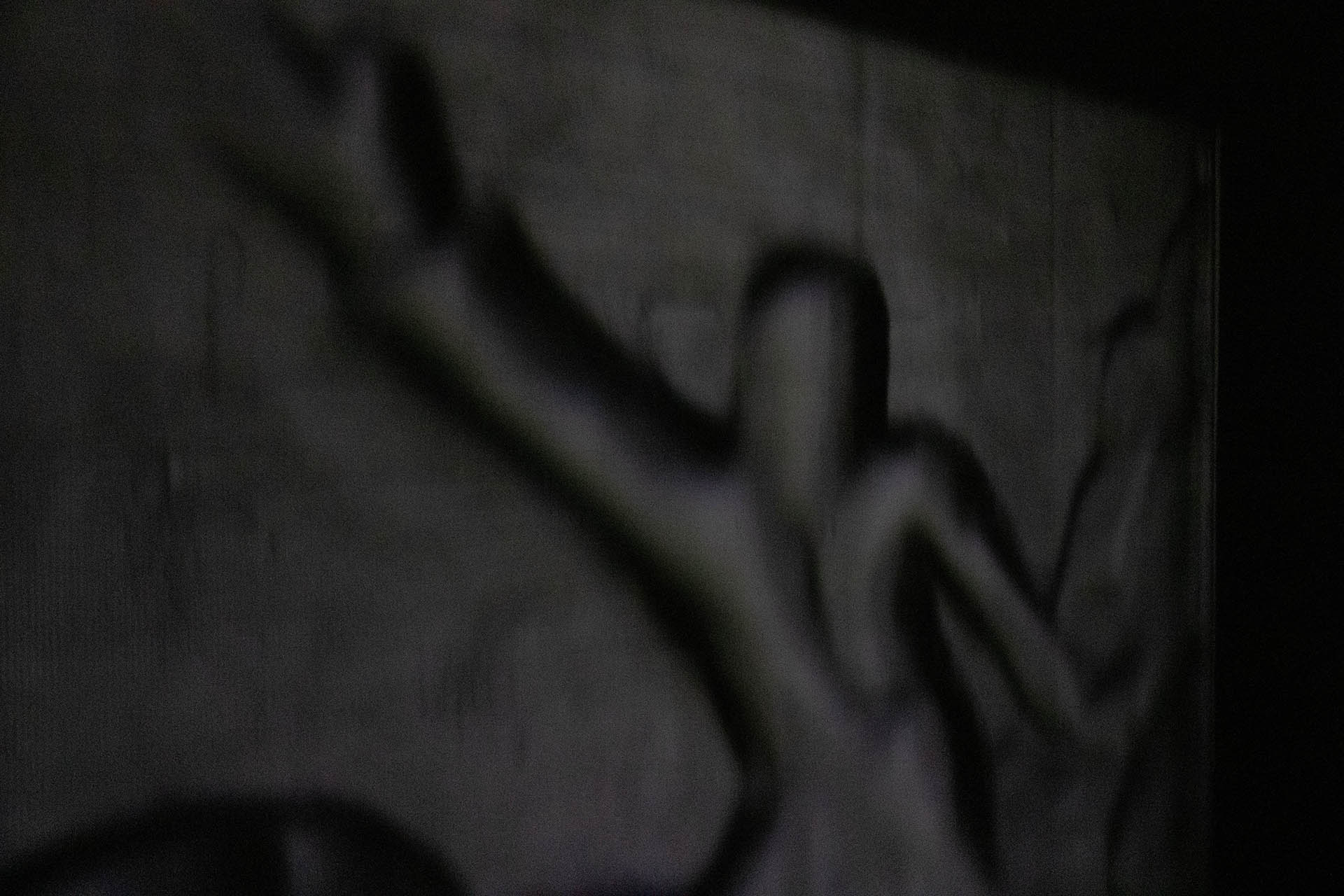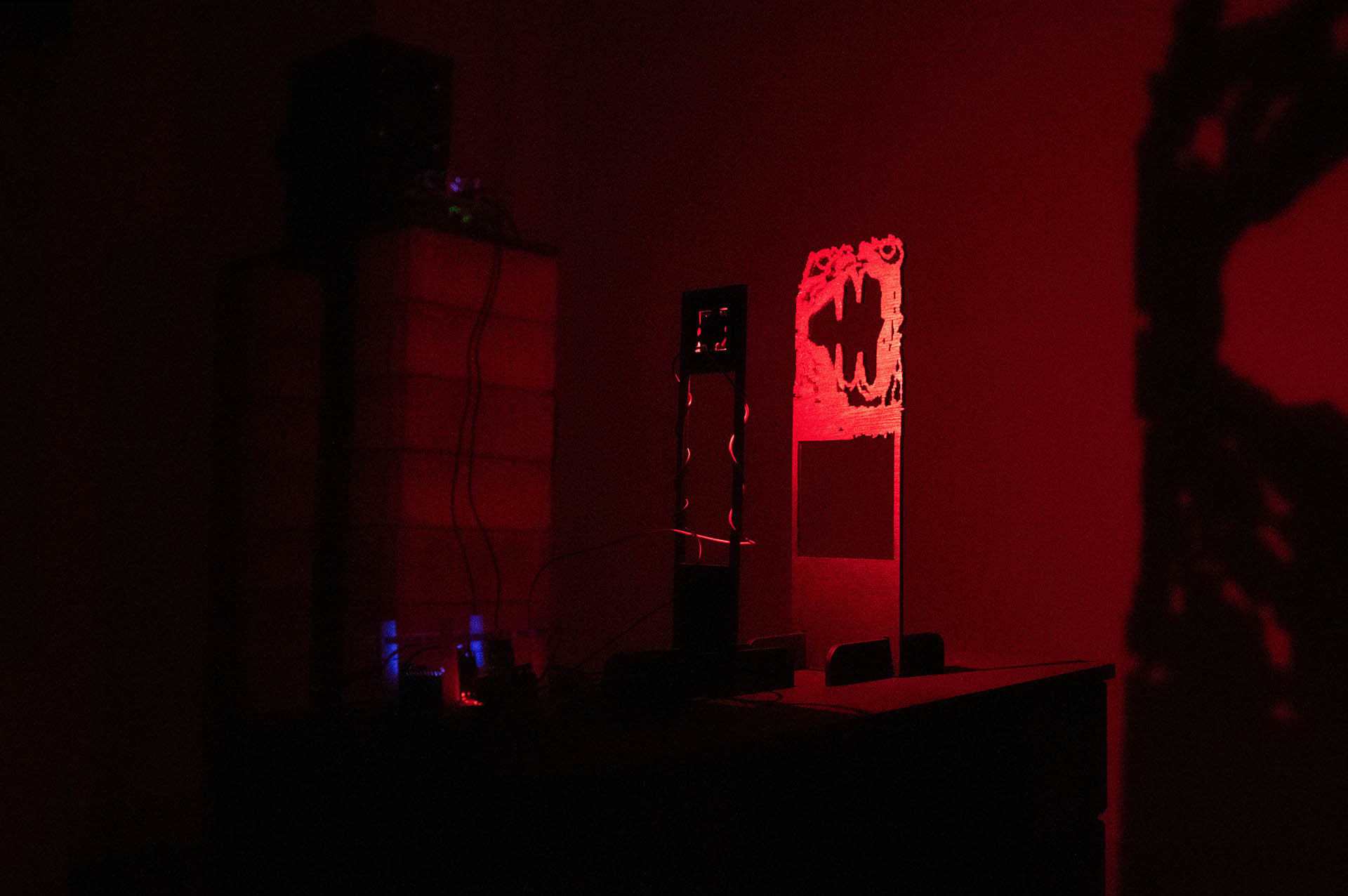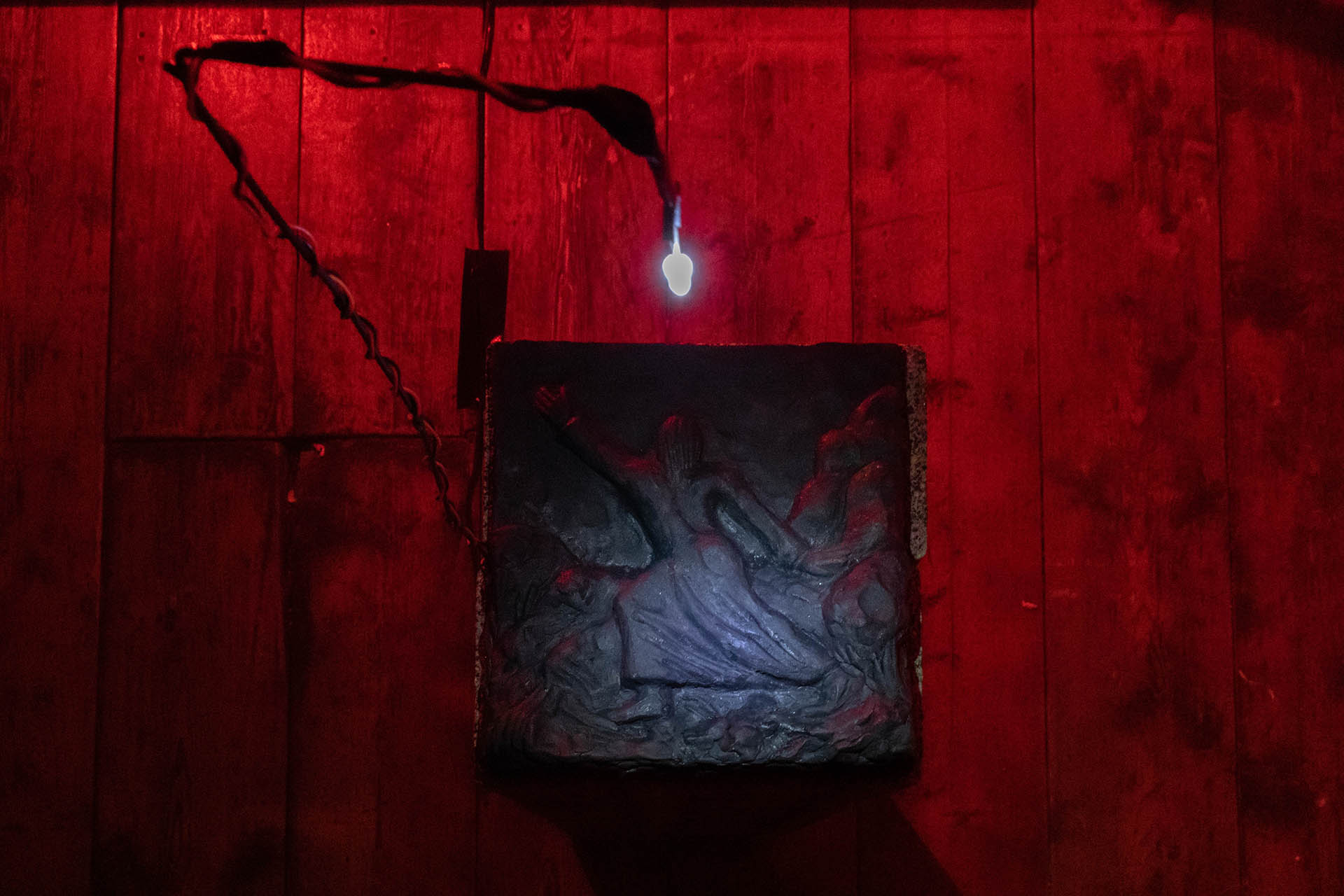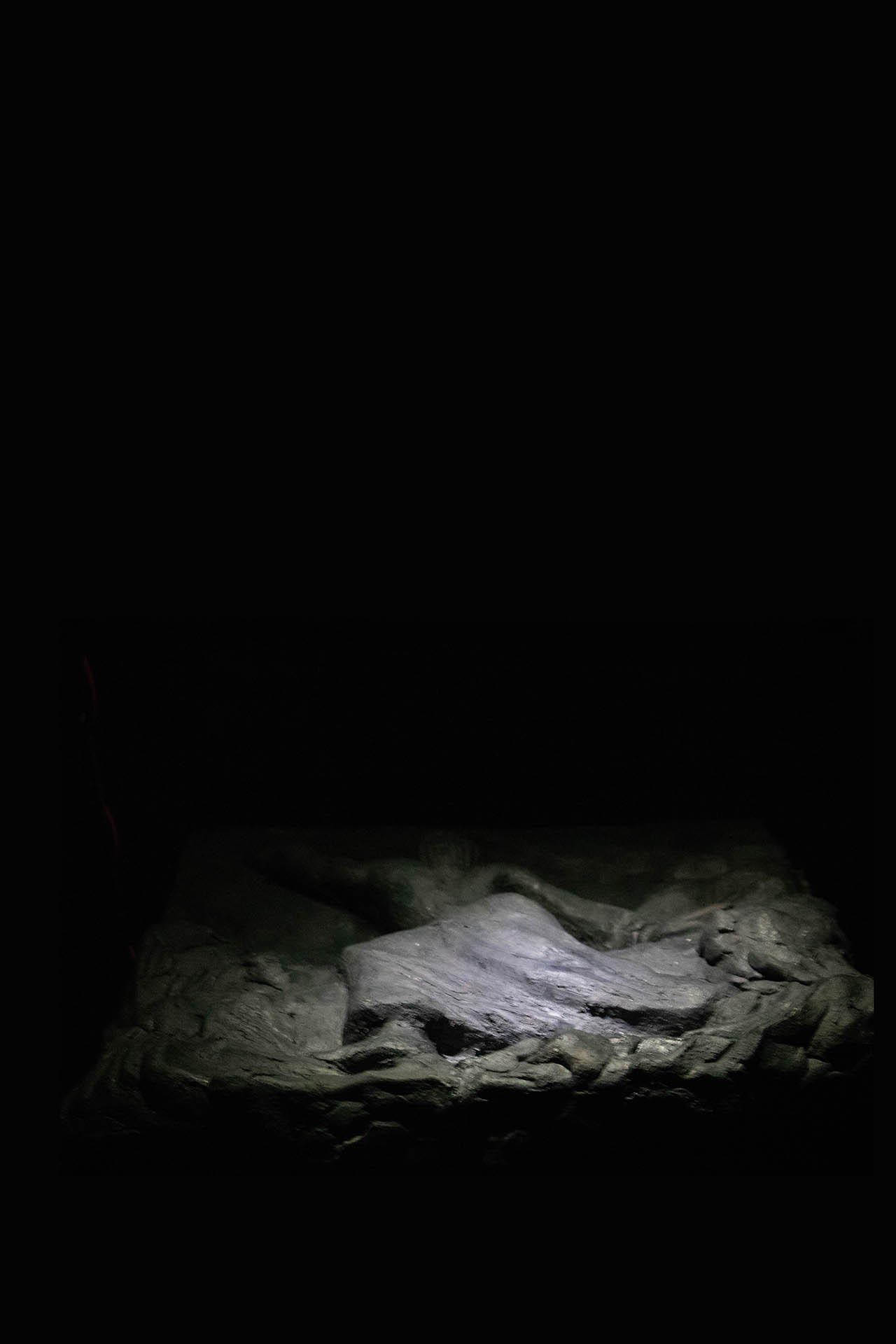The installation is part of an ongoing research into the materiality of images—how they manifest as both solid objects and ephemeral light. It combines sculptural and optical elements to explore the question: Where are images born, and how do they manifest? This inquiry led to the development of custom-built projection devices that operate outside conventional formats. These devices are crafted using salvaged components, microcontrollers, and DIY prototyping techniques, and are designed to animate light through motion, opacity, and absence.
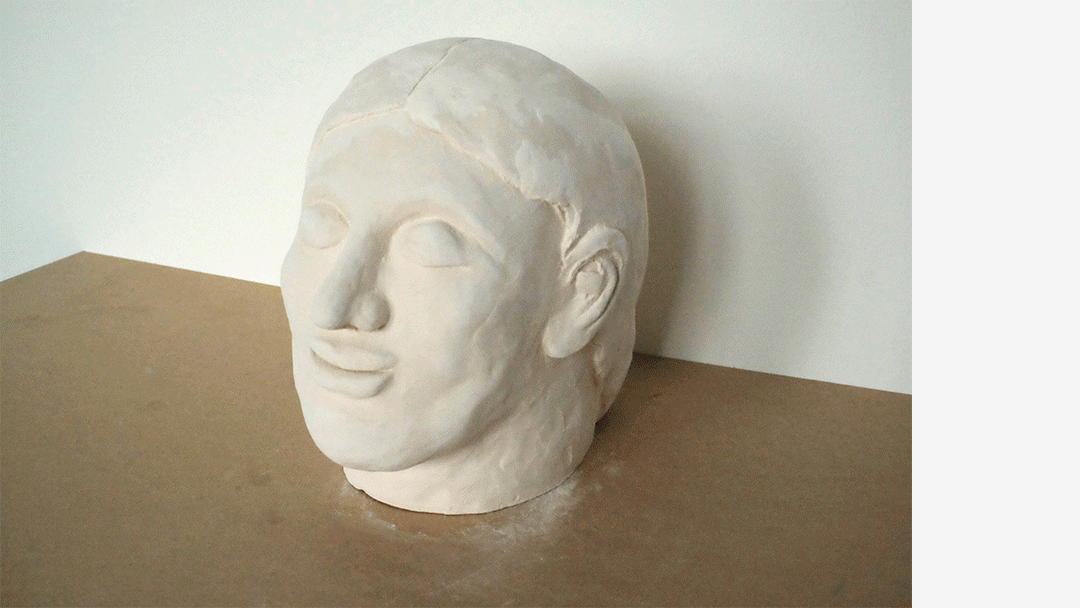
A sequence showing the workflow used to create the projection: clay sculpture, digitalised version, 3D-printed resin object and projected image.
Central to the process is the transformation of three-dimensional objects into projected images. Sculptures are first modeled in clay, then 3D scanned and printed using SLA resin, a material chosen for its ability to retain transparency and fine detail. These printed forms function as “slides” within the projectors, which are engineered to manipulate light and optics in real time. The devices use motorized systems to shift focal lengths and animate the projection, while microcontrollers regulate timing, transitions, and light behavior. Alongside projection, the installation incorporates shadow-making mechanisms that evoke early cinematic and theatrical traditions. These elements allow for layered visual experiences, where images emerge through both presence and absence, material and light.
The project was first presented at the exhibition Rewriting the Future at PARK, Tilburg, and is currently in development. It consists of a series of evolving prototypes that explore different relationships between image, object, and light.
1 from Latin ‘Rari nantes in gurgite vasto’, excerpt from Aeneid, Virgilio, 29-19 B.C.
